There exists a serene and glorious lake lying in the lofty Himalayan heights, beneath the shadow of the sacred Mount Kailash: Lake Mansarovar. At an elevation of 4650 m, it is among the highest elevation freshwater lakes in the world, spanning an area of approximately 320 sq. km, with a circumference of 82 km and a depth of around 100 m. Its crystal-clear water reflected glistening snow-clad peaks bearing the weight of centuries of spiritual belief, making it a hit among pilgrims and tourists alike.
The lake, which is sacred in almost all religions, carries immense sanctity and spiritual status. According to Hindu mythology, this lake was formed from the mind of Lord Brahma. The term "Mansarovar" (मानसरोवर) is derived by joining two words of Sanskrit: Mānas (मानस्) meaning "mind" (intelligence, perception, and conscience), and Sarovar (सरोवर) implying "lake or large pond".
Among the typical features lying at the high altitude, the lake does shelter varying species of flora and fauna, including fish, swans, and many more. On the other hand, surrounded by snow giants Mount Kailash and Gurla Mandhata, it is a remarkable place witnessed by many nature lovers. This article attempts to entice and inspire pilgrims to this much talked about destination, a dream pilgrimage for many, by discussing the spiritual, cultural, and natural importance of the sacred Lake, thus revealing the cosy blanket of history, spiritual importance surrounding various religions, and picturesque landscapes around it.
Listen to our Podcast: Lake Mansarovar
Mansarovar Lake Facts
Here are some facts related to Lake Mansarovar:
|
Site |
Lake Mansarovar |
|
Tibetan Name |
Mapam Yumtso |
|
Chinese Name |
Mapang Yongcuo |
|
Type |
Freshwater Lake |
|
Location |
Tibet |
|
Altitude |
4650 m |
|
Area |
320 km² |
|
Depth |
100 m |
|
Circumference |
82 km |
|
Reverence |
|
|
Distributary Rivers |
|
|
Flora |
|
|
Fauna |
|
Beauty of Lake Mansarovar
Imagine a lake as clear as the rarest diamond, whose surface reflects every transient cloud or towering peak into a perfect shining canvas. Such is Lake Manasarovar, a skyward jewel high up in the majestic Himalayas. It is not one mere lake but a living canvas that behaves with shifting colours ranging from the midday blues to emeralds, depending on whichever way the sun decides to scatter the sky. Thin and crisp, the air here comes wrapped with the peaceful aura, beckoning you to just hang around. Time will almost seem to slow, give you that choice, and relieve you from whatever thought was occupying your mind so you could dip into the unspoiled heavenly beauty.
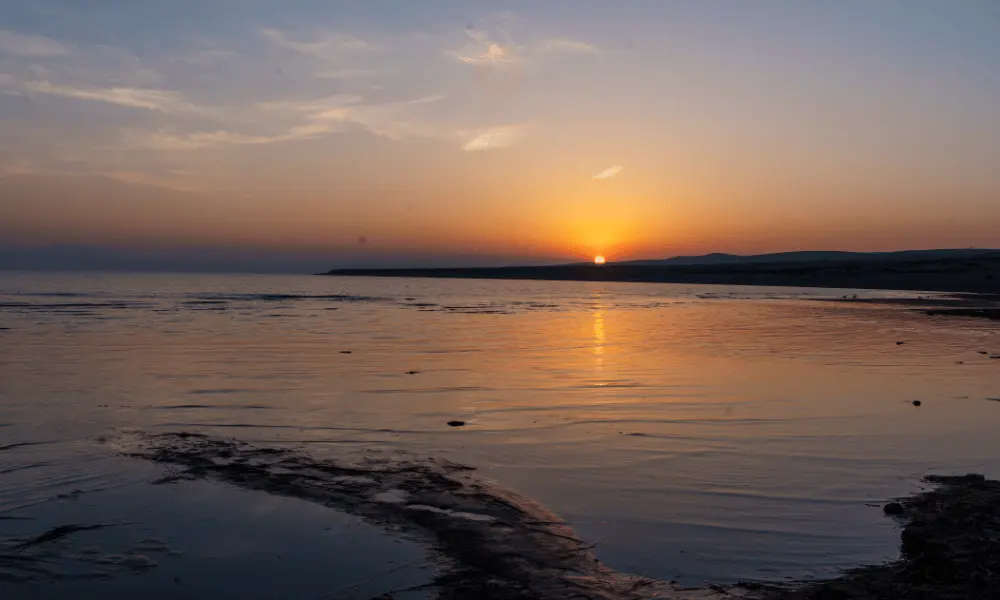
Just standing and watching along the shores of the lake makes one grateful for the life that they have. The lake is encircled by various Himalayan ranges, including the sacred Mount Kailash (6638 m) to the north and Gurla Mandhata (7728 m) to the south. To the east is its other lake, Rakshas Taal, and hills to the west. The view of these mountains reflecting onto the lake is simply breathtaking. Somehow, the morning sun goes down upon Mount Kailash and Mandhata Peak and shimmers down on the lake, making an enormously beautiful sight.
However, Manasarovar's allure is far beyond being a gorgeous sight; it is a holy haven, a beacon for spiritual seekers worldwide. For ages, pilgrims belonging to practically all walks of life have undergone horrible hardships to enter those sacred realms, fueled by the ancient belief that the waters from the lake may cleanse and purify a person's soul. In that horrendous silence and solemnity, the waves would gently hover to the shore, creating a calming inner peace and an unfathomable connection to something old and powerful. So whether you seek some spiritual comfort, the power of nature to overwhelm, or a fine instance of irreplaceable beauty, Lake Manasarovar promises to etch itself deep into your heart forever, long after you have walked away from its enchanted arms. So shall we go ahead and discover this magic for ourselves?
Significance of Lake Mansarovar
Lake Mansarovar is far more than an accumulation of waters; it's a place profoundly charged with meaning that finds resonance in the worlds of mystics and nature. Its ethereal beauty and uniqueness have drawn pilgrims and explorers alike throughout history, making it all the more important.
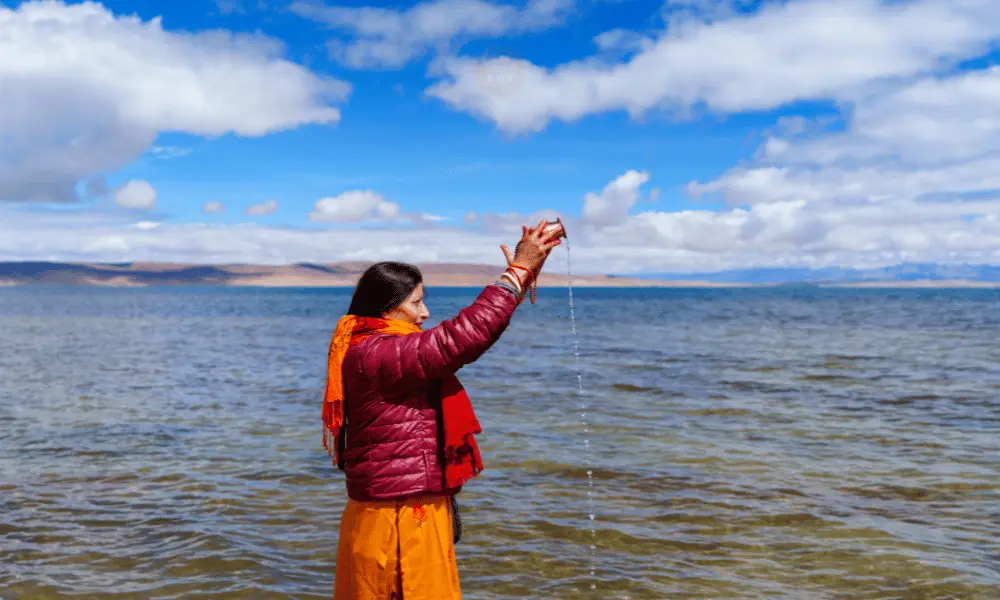
Natural Significance
From a natural perspective, Mansarovar Lake is considered one of the most elevated freshwater lakes in the world, atop 4600 meters. A beautiful lake with crystal waters whose source is glacial melt and famous for its transition in the shade of blue: from deep blue to emerald green. Acting as an eminent hydrological feature placed within a setting fashioned by great tectonic and glacial forces, the lake also serves as a linkage to saltwater Rakshas Tal, which somehow influences the Sutlej River of Asia. Despite being a frigid, high-altitude ecosystem, Mansarovar possesses unique biodiversity, thus providing a habitat for cold-water fishes and a breeding ground for landmark migratory birds like Bar-headed Geese, along with unique high-altitude mammals-a true natural wonder and an ecological oasis on the vast Tibetan Plateau.
Spiritual Significance
Could you believe that Mansarovar has always been an eternal divine lake, having retained such a status for some 4000 years? The majority of places of pilgrimage are sanctified because of the wondrous spiritual vibrations emanating from them, for example, the sacred Lake Mansarovar. This lake is placed close to the sacred Mount Kailash and is of utmost importance, having its own history and set of legends; hence, let us take a detailed account of the spiritual significance of Lake Mansarovar.
In Hinduism
According to Hinduism, the lake is called Brahmasar, signifying that it emerged from the mind of Brahma, the Universal Creator in Hinduism. Hindus believe that merely visiting Lake Mansarovar to perform rituals or prayers benefits the body and soul. They make an offering on the banks of Mansarovar because it is viewed as a place for meditation, God, and essential to the pilgrimage, where offerings purify one of sin and grant moksha. It is said that four prime rivers, the Indus, Sutlej, Brahmaputra, and Karnali, emanate from the headwaters of Lake Mansarovar. These rivers carry weight in Hindu mythology and are offered the status of divine water sources that impart life and sustenance to a big portion of South Asia. One who drinks its water is said to ascend to Lord Shiva's Abode after death.
In Buddhism and Bon
Tibetan Buddhists call this lake the sacred Lake Anotatta, or Anavatapta, the lake free of heat and trouble. Legends say that Lake Anotatta was the lake where Queen Maya Devi had bathed to purify herself before the white elephant entered her womb and became Siddhartha Gautam. The lake is also said to have a tree in the center that bears fruit with amazing healing powers that cure all human diseases, both physical and mental. There were once eight Buddhist monasteries around the lake, representing the Wheel of Life; pilgrims circumambulated the lake, visiting each monastery in what symbolized one turn of the wheel. Currently, most of these monasteries are gone, except for a rare survivor, Chiu Gompa, but Buddhists and Bon still trail around the holy lake. The Tibetan Buddhist traditions also recount that the region was the source of the mythical Lion, Horse, Peacock, and Elephant Rivers.
In Jainism
Jains also view Mansarovar Lake with reverence, as it is connected to Rishabhanatha, the first Tirthankara, who attained Nirvana in Asthaspad near the lake. Known to the Jains as Padma Hrada, the lake is hence deemed a sacred pilgrimage destination that helps them keep in touch with their spiritual traditions. The Jains also believe that after Rishabhanatha attained Nirvana, his son Emperor Bharata constructed three stupas and twenty-four shrines of the 24 tirthankaras in this area.
Mysteries and Legends
Lake Mansarovar, perched at around 4600 meters above sea level in the Tibet Autonomous Region of China, near Mount Kailash, ranks among the highest freshwater lakes and holds utmost religious and spiritual significance. The sacred lake finds associations with the religions of Hinduism, Buddhism, Jainism, and Bon. With another name for the sacred lake, many mysteries, legends, and mythologies have grown: Here are some of the most enticing ones:
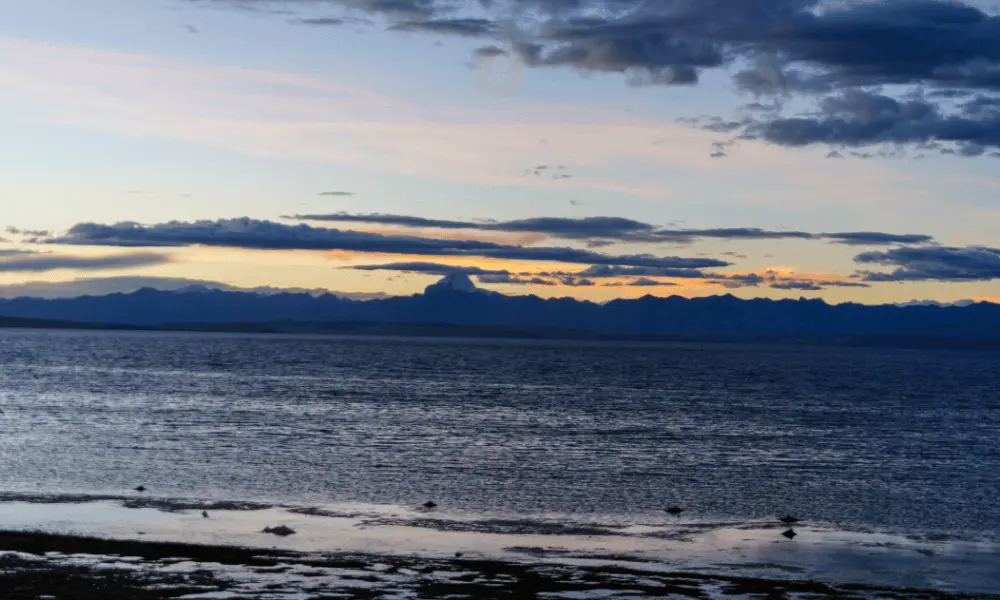
The Lake of Divine Origin
According to Hindu mythology, Lake Mansarovar was first created in the mind of Lord Brahma; hence its name in Sanskrit-Manas (mind) and Sarovar (lake). Further, it is said to be a source of purity, and a dip in its waters removes the sin of one hundred lifetimes.
The Spiritual Twin: Rakshastal
Closer to Mansarovar, there lies Rakshastal, a saltwater lake, considered inauspicious. In Hindu mythology, Rakshastal was created by Ravana (king of demons) for the purposes of penance to win favor from Lord Shiva. While the Mansarovar is circular (signifying harmony and peace), the Rakshastal is crescent-shaped (symbolizing darkness and chaos). Such forbidding contrast between the two leads to several metaphysical interpretations concerning the duality of good and evil.
The Visiting Swans
The ancient Indian texts state that celestial swans visit Lake Mansarovar. These birds symbolize purity and enlightenment. It is said that whoever is fortunate enough to see the swans upon the lake is fated for spiritual release (moksha).
A Gateway to Mount Kailash
Lake Mansarovar is a spiritually connected lake to Mount Kailash, believed to be the residence of Lord Shiva and the axis mundi (cosmic axis). Legends say the entire area is guarded by divine beings, and those who are unable to spiritually absorb its energy may have to encounter hardships, hallucinations, or even health issues during their pilgrimage.
Source of 4 Holy Rivers
Spread over an area of 320 square kilometers, Mansarovar Lake stands as a massive, natural reservoir. It also drains water into Rakshas Taal and forms the source of many major sacred rivers in Hinduism.
|
Tibetan Name |
English Translation |
Indian Name |
Side of the Lake it flows |
|
Langchen Khambab |
River coming out of the mouth of an elephant |
Sutlej |
West |
|
Mapcha Khambab |
River coming out of the mouth of a peacock |
Karnali |
South |
|
Tamchok Khambab |
River coming out of the mouth of a horse |
Brahmaputra |
East |
|
Senge Khambab |
River coming out of the mouth of a lion |
Indus |
North |
Lake Mansarovar and Rakshastal
Lake Manasarovar and Rakshastal are the two high-altitude lakes at an elevation of 4,600 m in the Tibetan Autonomous Region of China. Being at such close distance from each other and also by virtue of their differing characteristics, the lakes hold opposing symbolic meanings. Manasarovar means "heavenly lake"; it is one of the high-altitude freshwater lakes in the world and is considered sacred in the Hindu, Buddhist, and Jain faiths. The waters of Manasarovar are believed to wash away the sins of man, and the pilgrims of Kailash Mansarovar Yatra use Lake Mansarovar as a place along the way to bathe, offer prayers, and conduct holy rites.
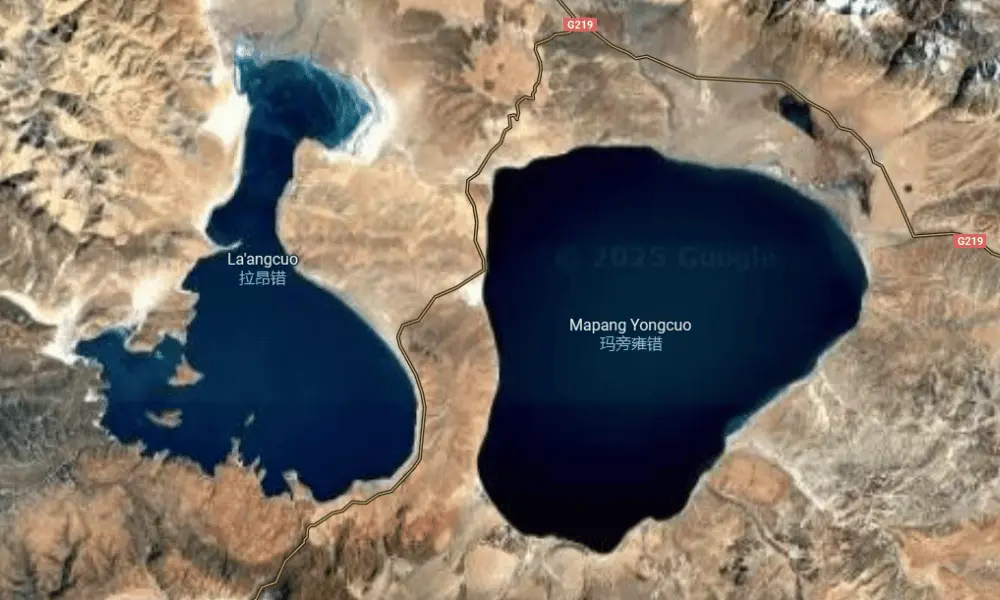
Rakshastal, meanwhile, also known as Ravana Hrada or Ravan Sarovar, which means the "Lake of Demons," is a saltwater lake and is considered inauspicious. It has bad energy associated with it and is, therefore, avoided mostly by pilgrims during the holy journey. In spite of its splendour, the lake is seldom visited due to its bad character.
Different lore, however, gives a different interpretation to Rakshastal. Rakshastal was once the abode of demons, it is said, and its waters were undrinkable. Yet the image of the lake underwent a change when two golden fish battled in Lake Manasarovar, one pursuing the other into Rakshastal through a channel named Ganga Chhu. The sacred waters of Manasarovar flowing into Rakshastal conferred a little respectability on it. Still, the two lakes remain symbolic opposites, the good and the evil, the pure and the impure, though lying close to each other and sharing in a common natural beauty.
Things to do around the lake
Lake Mansarovar is not merely a majestic natural charm; it is considered a very precious and sacred site that ultimately forms an inherent portion of the Kailash Mansarovar Yatra. While most would consider the spiritual aspect to have primary precedence, a few other activities that pilgrims undertake include:
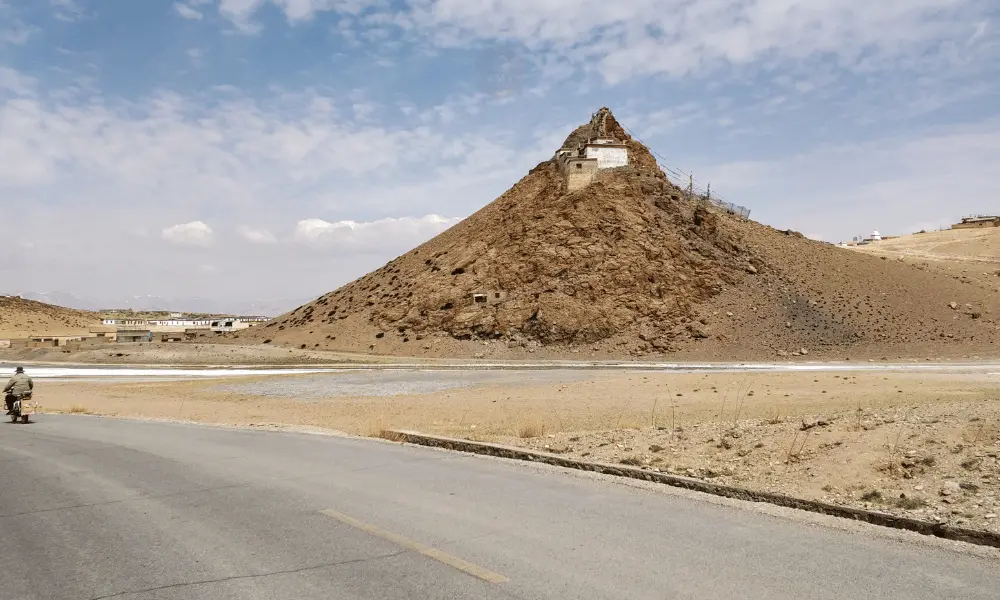
Holy Dip and Rituals
The lake is said to absolve sins accumulated since time immemorial and grant spiritual merit. At times, environmental concerns forbid direct dipping with pilgrims; however, they are allowed to collect water and perform ritualistic baths elsewhere outside the lake. Also, many pilgrims conduct various worship ceremonies and rituals, pujas and hawans respectively, on the lake shore and offer prayers, flowers, incense, and food to the concerned deities.
Visiting Monasteries
Historically, eight monasteries surrounded Lake Mansarovar, most of which have been destroyed or are now in ruins. Chiu Gompa, perhaps the most visited and best accessible monastery, is built upon a hill with breathtaking views of Lake Mansarovar and Mount Kailash. Visiting the monastery gives insight into Tibetan Buddhism and its cultural practices, with orthodox prayers and meditations undertaken by pilgrims. Explore other extant monasteries around the lake as well for further spiritual and cultural experiences.
Meditation and Scenic Exploration
The calming and serene action of the Mansarovar Lake imbues all the things that nurture the spirit with peaceful tranquility, so that one can meditate, pray, and do their own deep spiritual contemplation. Pilgrims even resort to sitting in contemplation for hours, attuned to the divine energy they believe to be emanating from the lake and the sacred environment. Additionally, it is an actual haven for nature lovers and photographers. Photographers are treated to amazing vistas as the colors of the lake change from deep blue in the morning to emerald green at sunset. The serene and clear waters reflect indescribably stunning images of Mount Kailash and other snow-clad peaks like Gurla Mandhata. So just sitting on the shore, absorbing the profound silence and spirit of the barren, high-altitude landscape, is an activity in itself-really good for meditation and quiet contemplation.
How to reach?
While reaching Kailash Mansarovar is quite an effort due to the logistical and permit complications of the Tibetan side, there are just a few strategic entry points considered normally; most routes go via Nepal. Kathmandu sits at the heart of Kailash Mansarovar Yatra and offers many options:
Overland Route via Kyirong (Kerung) Border
Most common and also usually the cheapest entry point.
- Journey: From Kathmandu, drive all the way to the Nepal-China border at Rasuwagadhi (just near Syabrubesi), get off for all immigration formalities, and proceed to cross into Kyirong (Gyirong) in Tibet. From there, one proceeds further by road through Saga and other towns up to Darchen, a base camp for Mount Kailash.
- Duration: 10-14 days on average, round trip from Kathmandu.
- Pros: Time for gradual acclimatization, a beautiful road journey, and mostly cheaper.
- Cons: The journey on the road could stretch for hours and could be bumpy at times. Occasionally, the roads get closed due to landslides or weather.
Related Package: Kailash Mansarovar Yatra by Drive
Helicopter Route via Simikot/Hilsa
This is faster and more comfortable but generally more expensive.
- Journey: From Kathmandu, a flight takes you to Nepalgunj (a city in western Nepal). From Nepalgunj, a flight proceeds into Simikot (Humla district), the trekking hub. From Simikot, a helicopter flies you to Hilsa, the border town; thereafter, after crossing into Tibet, it will take you to Purang (Taklakot) by road for acclimatization and then onward toward Mansarovar and Darchen.
- Duration: About 9-11 days for the entire round trip from Kathmandu.
- Pros: It saves a significant amount of travel time, and it is less strenuous than the land route since the aerial view is beautiful.
- Cons: More expensive, flies you late for acclimatization (so must be carefully monitored), dependent on the availability of flights and helicopters, which in turn is dependent on the weather.
Related Package: Kailash Mansarovar Yatra by Helicopter
Flight to Lhasa then Overland to Kailash
For a mixture of culture and pilgrimage.
- Journey: Direct flight from Kathmandu to Lhasa (the capital of Tibet). Acclimatize and sightsee in Lhasa for a few days (Potala Palace, Jokhang Temple, etc.). From Lhasa, proceed by road to Darchen through various towns and high passes.
- Duration: Around 14-17 days.
- Pros: The Lhasa stay ensures proper acclimatization, an enriching cultural experience, and seeing more of Tibet.
- Cons: Longer overall and always pricier than the direct overland route from Kathmandu.
Related Package: Kailash Mansarovar Yatra by Flight via Lhasa
Travel Tips
The trip to Lake Mansarovar will always be subject to many considerations, and one has to acquire at least some basic knowledge about the practicalities of the opportunity. Understanding logistics, requirements, and the way in which they work will ensure that the visitor has a full and rewarding experience, thereby sidestepping any hardship along the way. Some of the best tips for keeping travelers prepared are:
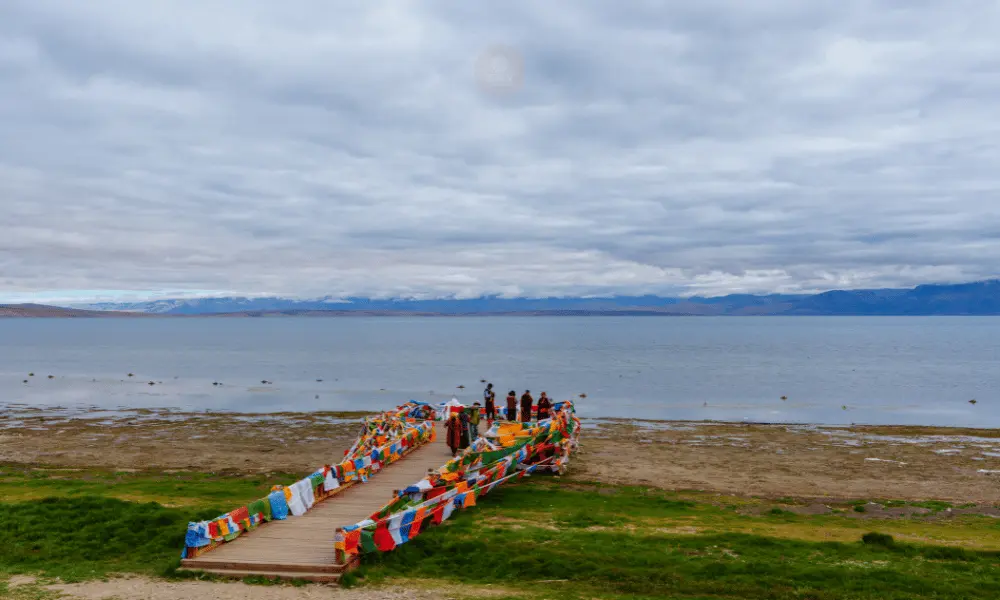
Best time to visit
The region is best visited from May to September. It is the popular time for the journey, based on relatively fine and even weather. The area's charm is at its prime, and the arteries of this will be unclogged. These are the daytime temperatures, reaching 15°C, downsizing to 0°C at nightfall in this period. There will be an occasional rain shower with some clouds during the onset of June and July, and even September could stretch out with some snowfalls. Out of these months, the region is generally closed to tourists.
Learn More: Best time to Visit Kailash Mansarovar
Things to carry: Packing List Suggestions
A clever pack will preview an unruffled journey. Nothing should be taken for granted; go over everything, from clothes to documents and anything else you might require. The weather here is sometimes unpredictable, so layering is a must: pack thermals, fleece, rain jackets, pants that are comfortable, and so on. Also, pack all the important documents, such as the Tibet Travel Permit (TTP), Passport, etc. Bring along some basic necessities like toiletries and medications.
Learn More: Kailash Mansarovar Yatra Packing List
Respect Local Customs and Beliefs
The lake is considered sacred by many religions, so kindly consider dressing modestly, avoiding loud behavior, and following the local customs. When participating in rituals, be respectful of the experience and mindful of their religious implications.
Stay Hydrated and Eat Light
At high altitude, dehydration sets in quite easily. Drink lots of warm water, herbal tea, and light meals that pack carbohydrates for energy. Avoid alcohol and smoking at all costs while on the journey.
Proper Acclimatization
At an elevation of about 4600m above sea level, altitude sickness arises as a genuine health concern. Therefore, spend some days in kyirong acclimatizing at lower altitudes before setting off to the lake. Also keep yourself hydrated; it helps significantly in acclimatizing.
Conclusion
Situated at the foot of the mighty Mount Kailash, Lake Mansarovar continues to mesmerize the pilgrims with its calm beauty and rich spiritual aura. The lake is said to be holy by Hindus, Buddhists, Bon System adherents, and Jains and is visited by thousands praying to bathe in its waters for spiritual purification. For many, this is one of the few opportunities to reduce the burden of their faith and tighten the connection with the divine-being a seldom experienced opportunity.
Lake Mansarovar stands calm and timeless at the core of the Himalayas. Its very sacredness and the surreal beauty of its surroundings embody awe and worship from whoever undertakes the journey. Whether for spiritual intent or remote adventure, those who come here find something in the ripple and the purity of an ancient lake very transforming.
Frequently Asked Questions (FAQs)
Here are some FAQs related to Lake Mansarovar:
In which country is Mansarovar Lake?
One might be confused and think that Mansarovar Lake is located in India, but it actually lies within the Tibet Autonomous Region of China.
Can we take a dip in Mansarovar Lake?
No, bathing in Mansarovar Lake is not allowed, and you might be fined if caught. So, do take care that the water and climate are not friendly for a dip-the temperature of the water can be intolerably cold and the altitude quite high. However, you can always collect some water from the lake and bathe on the shore.
What is the source of Mansarovar Lake?
In Hinduism, Buddhism, and Jainism, the lake is considered sacred, and its water is of a divine nature. But actually, Mansarovar Lake receives its waters from the nearby glacial peaks and mountains.
How deep is Lake Mansarovar?
Approximately 100 meters deep, Lake Mansarovar is home to many aquatic birds and fishes.
Who made Lake Mansarovar?
According to Hindu mythology, the lake had come into existence from the mind of Brahma. Hence, the name Mansarovar; “Manas” meaning mind and “Sarovar” meaning lake or big water body.
Which rivers originate from Mansarovar Lake?
The Sutlej, Indus, Brahmaputra, and Karnali rivers are the major rivers that originate from Mansarovar Lake and flow through various regions of Asia.
How is the accommodation around Mansarovar Lake?
Accommodation near Mansarovar Lake is very basic, and options are limited. Pilgrims and travellers stay in one of the many guesthouses arranged by tour operators.
Can I bring back the water of Mansarovar Lake with me?
Yes, small amounts of water from Mansarovar Lake can be taken as a souvenir in small containers or bottles.
How far is Mount Kailash from Lake Mansarovar?
Mount Kailash stands about 47.6 km north of Lake Mansarovar. The breathtaking view of Mount Kailash being reflected in Lake Mansarovar is an ideal backdrop for pilgrims coming for the Kailash Yatra.
Is Rakshas Tal near lake Mansarovar?
Rakshas Taal, also called the sister lake of Mansarovar, sits at a distance of around 3.7 km.
When is the best time to visit Lake Mansarovar?
The best time to visit Mansarovar Lake is during the summer months-from May through September. During these months, the climatic conditions remain quite warm and favorable for travel, although it is somewhat chill there considering the high altitude.

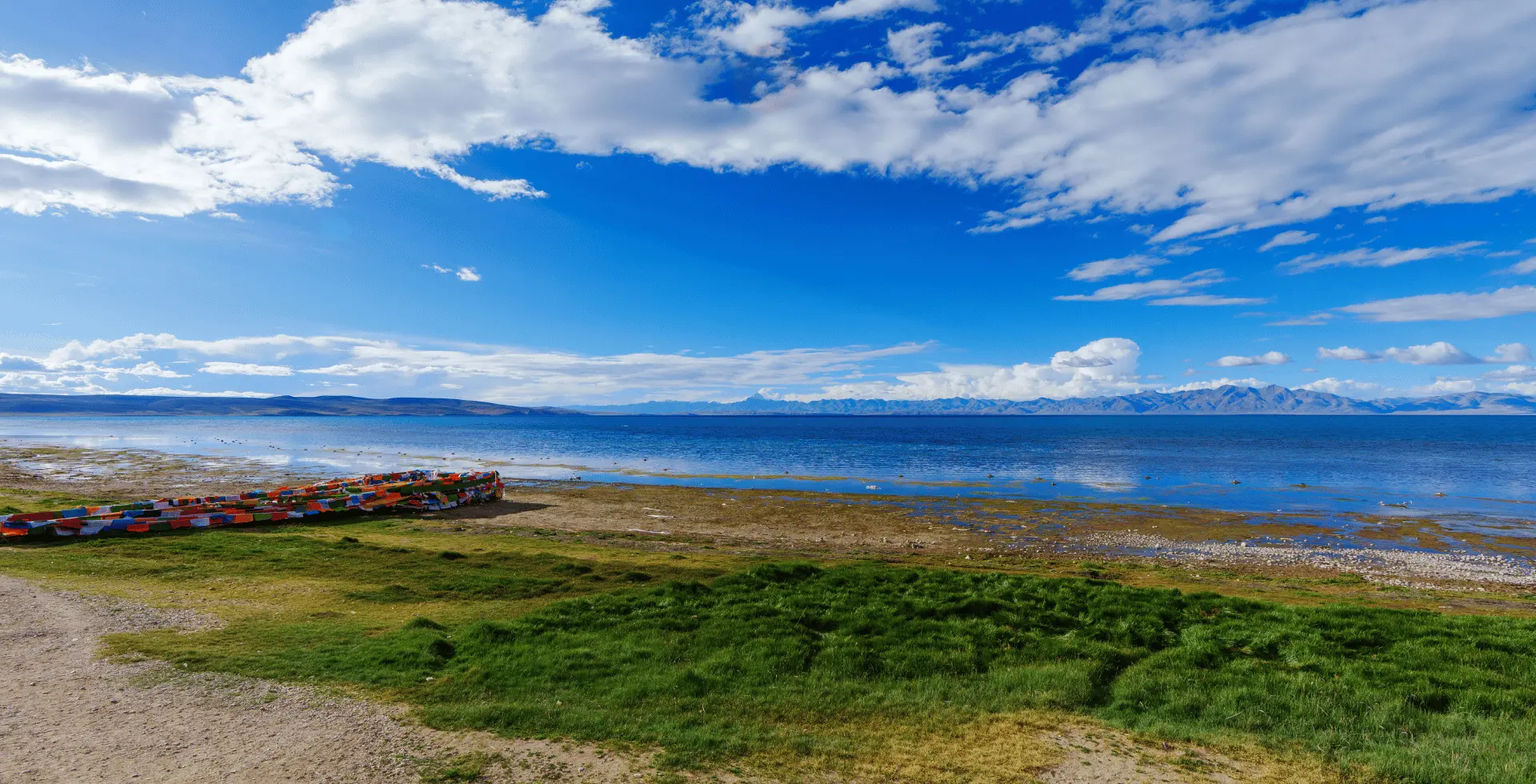
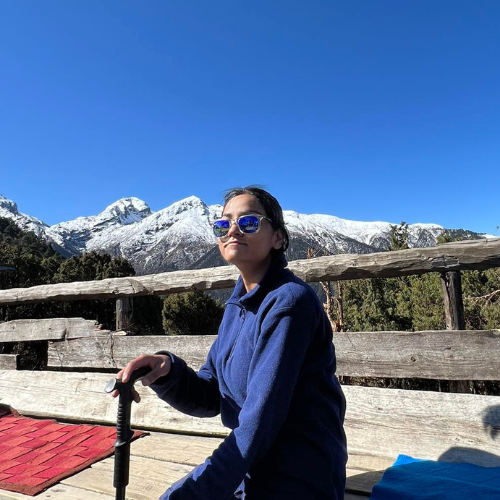 Mandira Itani
Mandira Itani